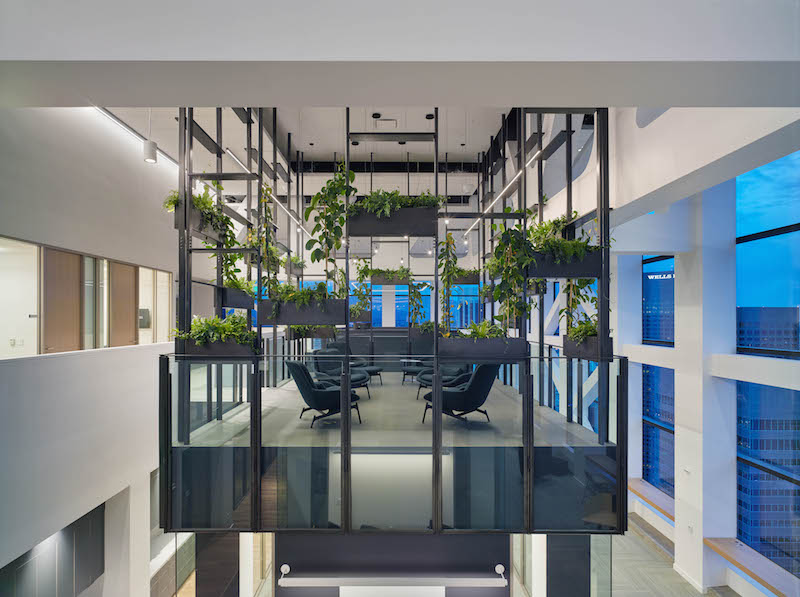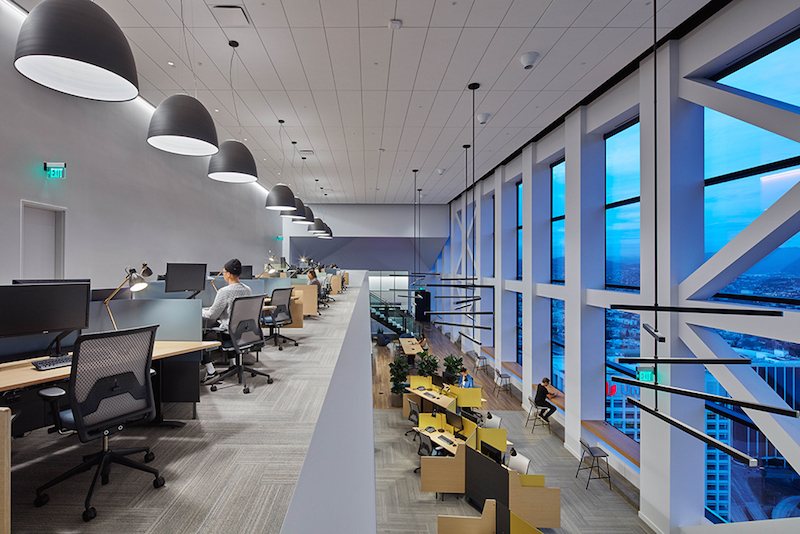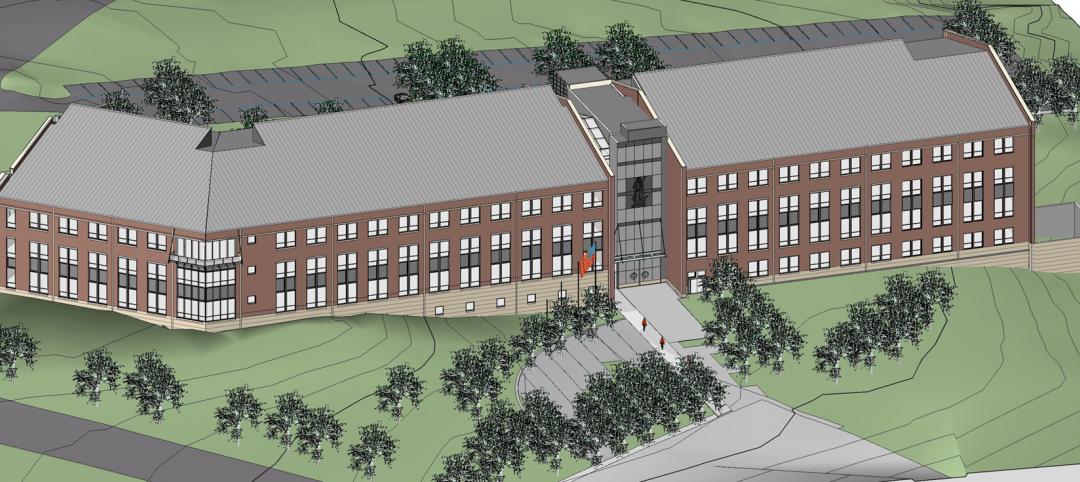When Joe Lozowski took over Tangram Interiors about 15 years ago, the Los Angeles-based distributor of office furniture was down on its heels. “Just being a furniture provider was not an exciting story,” recalls Lozowski about a company that dates back to 1963.
So the first thing he did after assuming control was to reach out to architects, designers, and clients about what they wanted from companies like his.
Fast forward to the present: Tangram Interiors has six furniture dealerships in southern California and 300 employees. It is the area’s second-largest flooring contractor. And under Lozowski’s leadership, Tangram has diversified into furniture customization (more than 40 of its employees are designers), fabrication, technology, and a “move management” business called Tangram Onsite.
Tangram Interiors’ revenue is expected to hit $180 million in 2017, from $127 million in 2014. (Add another $20 million or so from direct sales via Steelcase, its main furniture supplier.) Its growth engines are a custom furniture division Tangram Studio, which Lozowski started in 2004, and whose sales are projected to reach $12 million in 2017, from $7.75 million in 2014; and Tangram Technology, started in 2013, which is on pace to hit $5 million in revenue this year from $2.3 million in its first full year in operation.
Lozowski, 58, the company’s president and CEO, says his goal this year is to expand its Studio brand to a national level. He told GlobeSt.com that Tangram currently is installing projects for clients in Seattle (where it’s working with Juno Therapeutics, a biotech firm, to co-design furniture for 12 floors and build technology into that furniture), Portland, San Francisco, Dallas, Chicago, and New York.
Lozowski recalls that his company’s path toward diversification began when, around the time he took over Tangram Interiors, he was approached by a client who wanted furniture “that looked like it was made at Home Depot,” with a rough-hewn, DIY appearance. He accepted that commission, which got him thinking “maybe this is something we can make a business from.”
Tangram Interiors is not an interior design firm, Lozowski explains. Its design team, which includes 45 consultants, works with manufacturers, as well as its clients' designers, architects, engineers, and project managers to develop schematics for resilient workplaces, a concept borrowed from Steelcase that views office space as an adaptable ecosystem that evolves over time. Its principles revolve around design for wellbeing and providing employees with ranges of options within the workplace.
 Boston Consulting Group's offices in downtown Los Angeles include 30 meeting rooms and 24 private offices. Image: Courtesy Tangram Interiors.
Boston Consulting Group's offices in downtown Los Angeles include 30 meeting rooms and 24 private offices. Image: Courtesy Tangram Interiors.
Tangram Interiors’ client list includes Perkins + Will, Loyola Marymount College (with which it has worked for 10 years), Hulu, Brookfield Residential, Experian, Intuit, and UCLA Health. Tangram Studio helped with the furniture design for Tangram Interiors’ headquarters. (Lokowski refers to his showrooms as “learning labs.”)
Among Tangram Studio’s more recent projects is its collaboration with Boston Consulting Group (BCG) and the design firm Shubin Donaldson to create a new concept for the 45,000 sf of office space that BCG occupies in the north tower of City National Plaza in downtown Los Angeles. Tangram Studio’s research discovered that most of BCG’s consultants were in the office only 25% of the time. So its design solution includes 130 traditional workstations and 80 “touchdown” spaces with standing height stations incorporated into metal railings, lounge seating, and semi-private spaces throughout the office.
The design for this project includes 24 private offices and 30 meeting rooms within the office interior, leaving the perimeter open to allow for better outside views.
Lozowski started Tangram Technology after hearing from clients about how they couldn’t find reliable contractors that could coordinate the details between office design and technology. He says that, except for two big providers, this sector remains highly fragmented. Opportunities lie in the fact that “beside your chair, there’s nothing in an office that isn’t attached to a wire.”
Lozowski observes that most office designs lack “vision” because too many clients are still focused on what’s the least they can spend. He says the key to successful office furniture design is “mass customization.” And what’s winning clients over the Tangram Interiors is “that people love we’re co-designing with them.”
Related Stories
| Apr 19, 2012
KTGY Group’s Arista Uptown Apartments in Broomfield, Colo. completed
First of eight buildings highlights unique amenities.
| Apr 19, 2012
Nauset begins work on $20M Joint Forces HQ at Hanscom AFB
3D imaging key to project timetable and cost containment.
| Apr 17, 2012
FMI report examines federal construction trends
Given the rapid transformations occurring in the federal construction sector, FMI examines the key forces accelerating these changes, as well as their effect on the industry.
| Apr 17, 2012
Miramar College police substation in San Diego receives LEED Platinum
The police substation is the first higher education facility in San Diego County to achieve LEED Platinum Certification, the highest rating possible.
| Apr 16, 2012
University of Michigan study seeks to create efficient building design
The result, the researchers say, could be technologies capable of cutting the carbon footprint created by the huge power demands buildings place on the nation’s electrical grid.
| Apr 16, 2012
Drake joins EYP as science and technology project executive
Drake’s more than 30 years of diversified design and project delivery experience spans a broad range of complex building types.
| Apr 13, 2012
Best Commercial Modular Buildings Recognized
Judges scored building entries on a number of criteria including architectural excellence, technical innovation, cost effectiveness, energy efficiency, and calendar days to complete, while marketing pieces were judged on strategy, implementation, and quantifiable results. Read More
| Apr 6, 2012
Flat tower green building concept the un-skycraper
A team of French designers unveil the “Flat Tower” design, a second place winner in the 2011 eVolo skyscraper competition.
| Apr 2, 2012
EB-5 investment funds new Miramar, Fla. business complex
Riviera Point Holdings breaks ground on $17 million office center.
| Mar 28, 2012
Milestone reached for LEED-certified buildings?
Total number of major global green buildings now stands at 12,000.
















